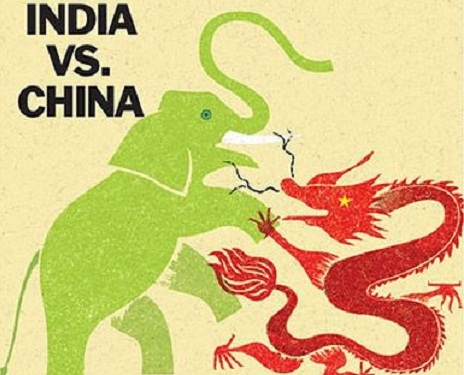As immediate neighbors and old civilizations, China and India have long enjoyed mutual harmony spanning almost two millennia.
Yet, the half century since India`s independence in 1947 and Chairman Mao Zedong`s establishment of the People`s Republic in 1949 has been anything but harmonious.
Deep freeze
Unresolved border disagreements led to a brief war in 1962, which India lost. Over the next four decades, relations between the two neighbors went into deep freeze.
Since 2000, however, there has been a rapid thawing of the relationship between China and India -- centered largely around trade.
Since then, bilateral trade between the two has grown at an average annual rate of 29%, faster than the growth rate in either country`s trade with any other region of the world.
Nonetheless, the China-India relationship is beset with serious tensions over two issues: India runs a large trade deficit vis-à-vis China; and, the border disagreements
Strong leaders
The confluence of recent developments make this an opportune time for a fundamental transformation.
On both sides, the new leaders -- Xi and Modi -- are politically secure and likely to rule their nations for the next ten years.
Their domestic strength coupled with a shared willingness to chart new paths makes it more likely than at any time in the last 50 years that Xi and Modi will find a mutually satisfactory resolution to the border disagreements.
Both leaders have publicly reiterated their shared belief that peace along the border is critical to help them stay focused on their number one priority -- economic development.
Given recent developments in both India and China, the next ten years will also see a complete transformation in the China-India economic relationship -- from just trade to trade topped with large scale investments.
Modi appears determined to permanently fix India`s weakness in infrastructure and manufacturing, the way he did in the state of Gujarat, where he served as chief minister for ten years.
And China is the world`s grandmaster at infrastructure.
Given the ongoing slowdown in the domestic economy, Chinese infrastructure companies are eager to pursue opportunities abroad. Importantly, they also have access to a large pool of relatively low cost capital.
Scoping opportunities
As they look outside China, India easily emerges as the largest and fastest growing opportunity.
Officials from both countries are busy at work scoping opportunities for Chinese investments in helping build a high speed rail corridor from the north of India to the deep south.
They are also discussing the details of multiple China-focused industrial zones in India. We deem it as highly likely that Chinese investment in India could grow from less than $1 billion today to over $50 billion by the early 2020s.
As Modi and Xi sit down for tea in Xi`an, the latter`s hometown, they will be well aware that, given their paramount needs for peaceful rise, they must not only co-exist amicably but also actively seek ways to expand their cooperation to harness each other`s strengths.
More about:
















































